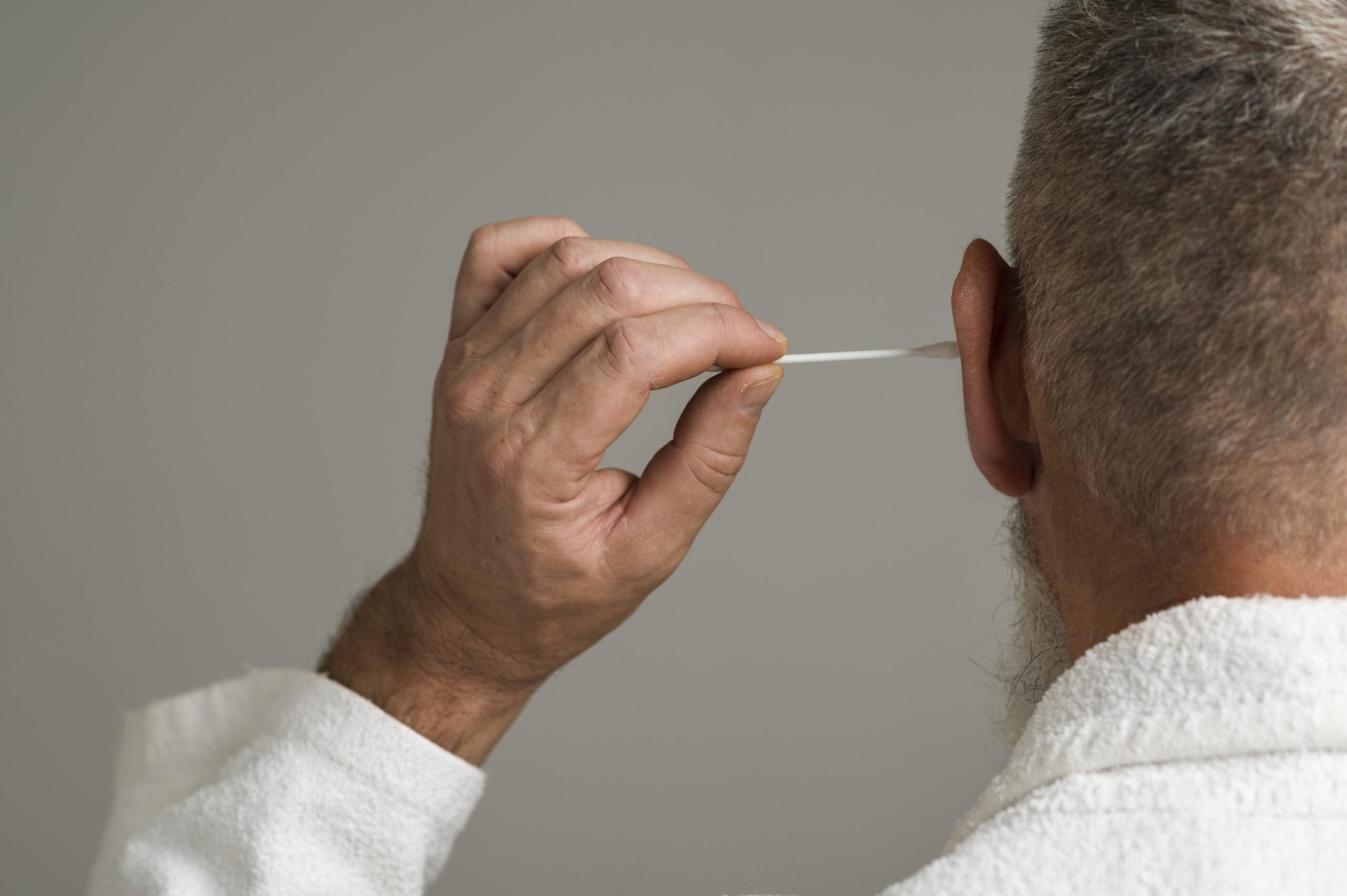Table of Contents
Have you ever experienced a sudden feeling that your ears are clogged, your hearing is muffled, or you’re missing out on everyday sounds? Chances are, earwax buildup could be the culprit. While earwax (also known as cerumen) is essential for protecting your ears, too much of it can lead to discomfort and reduced hearing clarity.
In this blog, we’ll cover everything you need to know about how to remove ear wax blockage fast, explore the best ear wax softening remedies, and discuss ways to unblock ears quickly and safely—without damaging your ears.
How to Remove Ear Wax Blockage Fast
When you need quick relief, there are several home methods and remedies that can help. However, they must be done with care.
1. Over-the-Counter Ear Drops
These drops are formulated to break down hardened wax, making it easier to remove.
How to use:
- Tilt your head sideways
- Place 5–10 drops in the affected ear
- Let it sit for 5–10 minutes
- Drain and wipe gently
Look for drops containing hydrogen peroxide, carbamide peroxide, or saline.
2. Warm Water Irrigation
Flushing the ear gently with warm water can help loosen and remove wax.
Steps:
- Use a bulb syringe (not too forcefully)
- Fill it with lukewarm water
- Tilt your head and squirt water into the canal
- Let it drain out and dry the ear
Avoid this method if you have an ear infection, a perforated eardrum, or have undergone cochlear implant surgery.
3. Steam Inhalation
Inhaling steam can help soften the wax naturally.
Try this:
- Boil water and pour it into a bowl
- Drape a towel over your head and inhale
- Do this for 5–10 minutes
This is a safe and effective earwax softening remedy.
Best Ear Wax Softening Remedies
Several natural and over-the-counter remedies can help soften stubborn wax for easier removal.
1. Olive Oil
Warm (not hot) olive oil is one of the most trusted natural methods to unblock ears quickly.
How to use:
- Warm a few drops of olive oil
- Lie on your side and place drops in the blocked ear
- Stay in position for 10–15 minutes
- Repeat for a few nights
2. Hydrogen Peroxide
A few drops of hydrogen peroxide (3%) can bubble and break down wax.
Note: It’s best used sparingly and never if you have ear damage or irritation.
3. Glycerin
Glycerin is a gentle, safe lubricant that helps soften earwax. Apply it similarly to olive oil.
4. Sodium Bicarbonate Drops
Widely available at pharmacies, these are fast-acting and effective in breaking up wax.
What Is Ear Wax and Why Does It Build Up?
Earwax is a natural substance produced by glands in your ear canal. Its role is to:
- Trap dust and dirt
- Prevent bacteria from entering the ear
- Lubricate the ear canal
However, in some cases, earwax doesn’t exit the ear naturally. Instead, it builds up and hardens, causing blockages that affect hearing and comfort.
Common reasons for wax buildup:
- Using cotton buds or fingers
- Wearing earplugs or hearing aids frequently
- Narrow or curved ear canals
- Overproduction of earwax
Signs and Symptoms of Ear Wax Blockage
Wondering if your ears are blocked with wax? Here are common symptoms:
- Feeling that your ear is full or clogged
- Muffled or distorted hearing
- Ringing in the ears (tinnitus)
- Mild earache or itching
- Dizziness or imbalance
- Coughing (in some cases due to nerve stimulation)
If these symptoms appear suddenly or worsen over time, it’s a strong sign you need to flush out earwax.
Why You Should Not Use Cotton Buds
Many people use cotton buds (Q-tips) thinking they’re cleaning their ears, but they often do more harm than good.
Here’s why:
- They push wax deeper into the canal
- Risk of damaging the eardrum
- May cause infections or worsen blockage
For safe removal, use ear wax softening remedies or seek professional ear measurements to evaluate the problem.
How to Unblock Ears Quickly and Safely
Here are additional methods to unblock ears quickly without risking damage:
1. Jaw Movements and Swallowing
Sometimes simple jaw exercises, chewing gum, or swallowing can help balance pressure and move wax.
2. Valsalva Maneuver
A technique to equalize pressure in your ear:
- Close your mouth
- Pinch your nose
- Blow gently
Use with caution and never forcefully, especially if you have sinus or ear problems.
3. Avoid Water Exposure
Water can worsen the sensation of blockage if the wax has hardened. Use earplugs during showers or swimming until the issue is resolved.
What to Avoid
If you’re trying to remove earwax blockage fast, avoid the following:
- Ear candles (can burn or damage the ear)
- Cotton buds or sharp objects
- Repeated water exposure during blockage
- Ignoring symptoms of pain or fluid discharge
Learn the difference between ear infection symptoms and earwax buildup.
When to See a Doctor or Audiologist
If you’ve tried home remedies and symptoms persist after 3–5 days, or you experience the following, see a professional immediately:
- Ear pain
- Fluid or pus discharge
- Persistent hearing loss
- Dizziness or nausea
- History of ear surgeries
In such cases, a visit to an audiologist or ENT specialist is advised.
Conclusion
A blocked ear can be frustrating, especially when it affects your hearing or comfort. The good news is that removing earwax blockage fast is possible through safe home remedies and professional care. Whether you prefer natural earwax softening remedies or need to flush out earwax with the help of specialists, there’s a solution for you.
For the safest and most effective treatment, we recommend visiting the experts at The Hearing Centre Singapore. Our audiologists are equipped to diagnose blockages quickly, helping you unblock your ears and restore hearing clarity.
Frequently Asked Questions
Use warm olive oil drops, OTC ear drops, or warm water irrigation. Avoid using sharp objects or cotton buds.
Natural oils like olive oil or glycerin drops are effective and safe.
Your ears are self-cleaning. Only remove visible wax or see a professional if a blockage occurs.
Yes, but only if your ears are healthy. Avoid if you have infections or eardrum damage.
Visit an audiologist for professional removal to avoid damage and ensure safety.
Usually not, but excessive wax can cause temporary hearing loss, infections, and discomfort.
Most drops soften wax within 3–5 days. For severe cases, professional help may be needed.
Yes, wax can block and damage hearing aids. Regular cleaning and check-ups are essential.
Yes, avoid inserting objects into your ears and consider regular ear cleanings by a professional.
Visit The Hearing Centre for expert earwax checking, hearing tests, and treatment.

Evlin is passionate about helping people with hearing loss. With years of experience in audiology, she has diagnosed and treated a wide range of hearing conditions across all age groups. She is accredited to conduct comprehensive hearing assessments and provide treatments for patients from newborns to the elderly. Committed to personalized care, she strives to empower patients to fully engage in life with better hearing.
Designation: Clinical Audiologist
Qualification: Bachelor of Health Science (Honours) (Audiology), University of Science Malaysia
Membership: .Society of Audiology Professionals in Singapore (SAPS)

